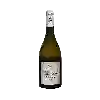
Winery Dampt FrèresMas du Soleiller Saint-Chinian
In the mouth this red wine is a powerful with a nice balance between acidity and tannins.
This wine generally goes well with beef, veal or pasta.
Taste structure of the Mas du Soleiller Saint-Chinian from the Winery Dampt Frères
Light | Bold | |
Smooth | Tannic | |
Dry | Sweet | |
Soft | Acidic |
In the mouth the Mas du Soleiller Saint-Chinian of Winery Dampt Frères in the region of Languedoc-Roussillon is a powerful with a nice balance between acidity and tannins.
Food and wine pairings with Mas du Soleiller Saint-Chinian
Pairings that work perfectly with Mas du Soleiller Saint-Chinian
Original food and wine pairings with Mas du Soleiller Saint-Chinian
The Mas du Soleiller Saint-Chinian of Winery Dampt Frères matches generally quite well with dishes of beef, pasta or veal such as recipes of salmon with cream sauce, lasagne or provencal veal tendrons.
Details and technical informations about Winery Dampt Frères's Mas du Soleiller Saint-Chinian.
Discover the grape variety: Narince
This grape variety is native to Turkey, where it is very well known and highly appreciated. In this country, it is very often grown at high altitudes. It is believed to be the result of a natural intraspecific cross between Dimrit Kara and Kalecik Karasi. Almost unknown in France, it is no more so in other wine-producing countries.
Informations about the Winery Dampt Frères
The Winery Dampt Frères is one of of the world's great estates. It offers 62 wines for sale in the of Saint-Chinian to come and discover on site or to buy online.
The wine region of Saint-Chinian
Saint-Chinian is an appellation in the Languedoc-roussillon">Languedoc-Roussillon wine region of southern France. It is located between Minervois and Faugeres, which produce similar styles of robust red wine from similar grapes and in a similar landscape. It is also adjacent to the Muscat de Saint-Jean-de-Minervois appellation, which produces Sweet white wines. Therefore, the diversity of the Languedoc region is well demonstrated in this small area.
The wine region of Languedoc-Roussillon
Languedoc (formerly Coteaux du Languedoc) is a key appellation used in the Languedoc-Roussillon wine region of southern France. It covers Dry table wines of all three colors (red, white and rosé) from the entire region, but leaves Sweet and Sparkling wines to other more specialized appellations. About 75% of all Languedoc wines are red, with the remaining 25% split roughly down the middle between whites and rosés. The appellation covers most of the Languedoc region and almost a third of all the vineyards in France.
The word of the wine: Grape
Fruit of the vine in the form of bunches of grapes, also called berries, attached to the stalk. The grapes used to make wine are known as grape varieties, a generic word that designates many types of vine plant with their own characteristics.











